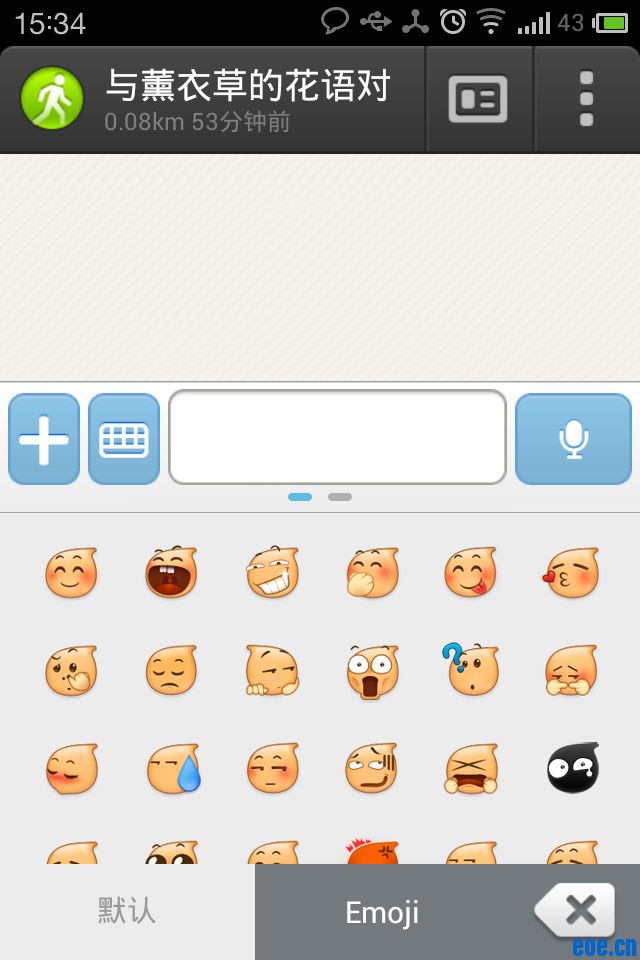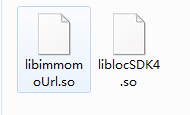Android修炼之道—高仿陌陌的项目
以前就在eoe上有关注这位大神,曾下载研究过他写的高仿开心,人人的android客户端。后来也在网上看到他写的高仿陌陌的,一直没有时间研究一下,今天就专门下载,看看聊天流程中有没有我可以借鉴学习的地方。该项目eoe上的地址:http://www.eoeandroid.com/thread-304239-1-1.html
接下来,开始看源码了:
1.架构
父类0
public abstract class BaseActivity extends FragmentActivity {
/** 初始化视图 **/
protected abstract void initViews();
/** 初始化事件 **/
protected abstract void initEvents();
}
父类1
public abstract class TabItemActivity extends BaseActivity {
protected abstract void init();
}
子类2
public class ContactTabsActivity extends TabItemActivity{
@Override
protected void onCreate(Bundle savedInstanceState) {
super.onCreate(savedInstanceState);
setContentView(R.layout.activity_contacttabs);
}
@Override
protected void initViews() {
}
@Override
protected void initEvents() {
}
@Override
protected void init() {
}
}
可以看到,例如 NearByActivity 类中onCreate()的调用顺序是:
setContentView(R.layout.activity_nearby);
initPopupWindow();
initViews();
initEvents();
init();
protected List<AsyncTask<Void, Void, Boolean>> mAsyncTasks
= new ArrayList<AsyncTask<Void, Void, Boolean>>();
protected void putAsyncTask(AsyncTask<Void, Void, Boolean> asyncTask) {
mAsyncTasks.add(asyncTask.execute());
}
protected void clearAsyncTask(){
Iterator<AsyncTask<Void, Void, Boolean>> iterator = mAsyncTasks
.iterator();
while(iterator.hasNext()){
AsyncTask<Void, Void, Boolean> asyncTask =
iterator.next();
if(asyncTask != null && !asyncTask.isCancelled()){
asyncTask.cancel(true);
}
}
mAsyncTasks.clear();
}
@Override
protected void onDestroy() {
clearAsyncTask();
super.onDestroy();
}
在BaseApplication中存储静态变量
public List<NearByPeople> mNearByPeoples = new ArrayList<NearByPeople>();
public List<NearByGroup> mNearByGroups = new ArrayList<NearByGroup>();
public static List<String> mEmoticons = new ArrayList<String>();
public static Map<String, Integer> mEmoticonsId = new HashMap<String, Integer>();
public static List<String> mEmoticons_Zem = new ArrayList<String>();
public static List<String> mEmoticons_Zemoji = new ArrayList<String>();
关于本地模拟数据,作者是这样做的
public Map<String, SoftReference<Bitmap>> mStatusPhotoCache
= new HashMap<String, SoftReference<Bitmap>>();
public Bitmap getStatusPhoto(String imageName) {
if (mStatusPhotoCache.containsKey(imageName)){
Reference<Bitmap> reference = mStatusPhotoCache.get(imageName);
if (reference.get() == null || reference.get().isRecycled()){
mStatusPhotoCache.remove(imageName);
} else {
return reference.get();
}
}
InputStream is = null;
Bitmap bitmap = null;
try{
is = getAssets().open(STATUS_PHOTO_DIR + imageName);
bitmap = BitmapFactory.decodeStream(is);
if(bitmap == null){
throw new FileNotFounceException(imageName + "is not find");
}
mStatusPhotoCache.put(imageName, new SoftReference<Bitmap>(bitmap));
return bitmap;
} catch (Exception e){
return null;
} finally {
try {
if (is != null){
is.close();
is = null;
}
} catch (IOException e){
}
}
}
}
2.库
陌陌首先是定位,所以可以看到百度LBS的库
因为陌陌是根据位置定位,这个很好理解,可是在armeabi中有libimomoUrl.so我就不懂了,网上搜了一下也没有介绍,可能是作者自己写的。
1.百度地图采用的是2.2版本
在AndroidManifest.xml中定义
<service
android:name="com.baidu.location.f"
android:enabled="true"
android:process=":remote" >
<intent-filter>
<action android:name="com.baidu.location.service_v2.2" >
</action>
</intent-filter>
</service>在BaseApplication中开启定位服务
// 获取当前用户位置
mLocationClient = new LocationClient(getApplicationContext());
mLocationClient.setAK("60b43d1a9513d904b6aa2948b27b4a20");
mLocationClient.registerLocationListener(new BDLocationListener() {
@Override
public void onReceivePoi(BDLocation arg0) {
}
@Override
public void onReceiveLocation(BDLocation arg0) {
mLongitude = arg0.getLongitude();
mLatitude = arg0.getLatitude();
Log.i("地理位置", "经度:" + mLongitude + ",纬度:" + mLatitude);
mLocationClient.stop();
}
});
mLocationClient.start();
mLocationClient.requestOfflineLocation();
System.out.println("开始获取");
关于另一个.so,有如下类:
public class JniManager {
static {
// 加载so文件
System.loadLibrary("immomoUrl");
}
private static JniManager mJniManager;
/**
* 获取单例对象
*
* @return
*/
public static JniManager getInstance() {
if (mJniManager == null) {
mJniManager = new JniManager();
}
return mJniManager;
}
// 获取用户帮助URL地址
public native String getHelpUrl();
// 获取用户协议URL地址
public native String getProtocolUrl();
// 获取用户协议对话框URL地址
public native String getAgreementDialogUrl();
// 获取群组等级URL地址
public native String getGroupLevelUrl();
}
3.工具
记录一下常用的工具类 NetWorkUtil
public class NetWorkUtils{
private Context mContext;
private State wifiState = null;
private State mobileState = null;
public NetWorkUtils(Context context){
mContext = context;
}
//import android.net.NetworkInfo.State;
public enum NetWorkState{
WIFI, MOBILE, NONE;
}
//import android.net.ConnectivityManager;
public NetWorkState getConnectState(){
ConnectivityManager manager = (ConectivityManager) mContext
.getSystemService(Context.CONNECTIVITY_SERVICE);
manager.getActivieNetworkInfo();
wifiState = manager.getNetworkInfo(ConnectivityManager.TYPE_WIFI)
.getState();
mobileState = manager.getNetworkInfo(ConnectivityMnager.TYPE_MOBILE)
.getState();
if (wifiState != null && mobileState != null
&& State.CONNECTED != wifiState
&& State.CONNECTED == mobileState) {
return NetWorkState.MOBILE;
} else if (wifiState != null && mobileState != null
&& State.CONNECTED != wifiState
&& State.CONNECTED != mobileState){
return NetWorkState.NONE;
} else if (wifiState != null && State.CONNECTED == wifiState){
return NetWorkState.NONE;
}
}
}



